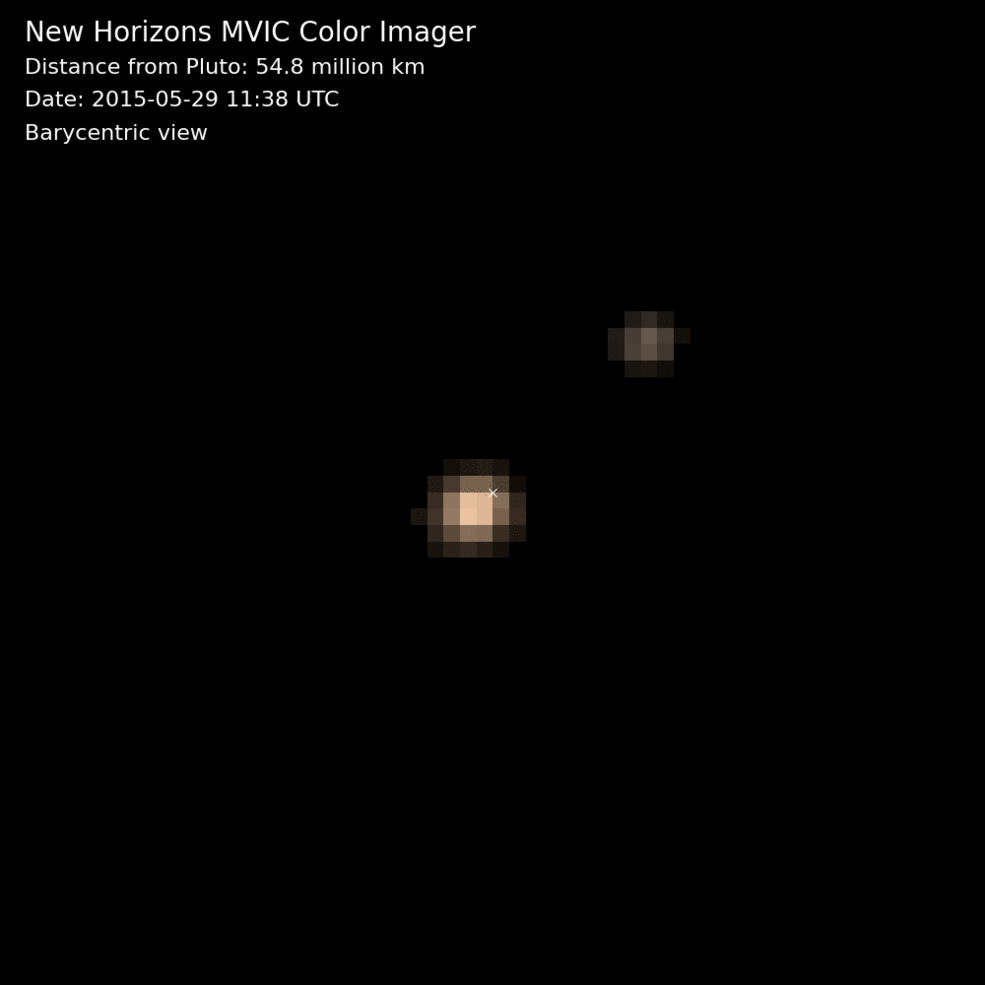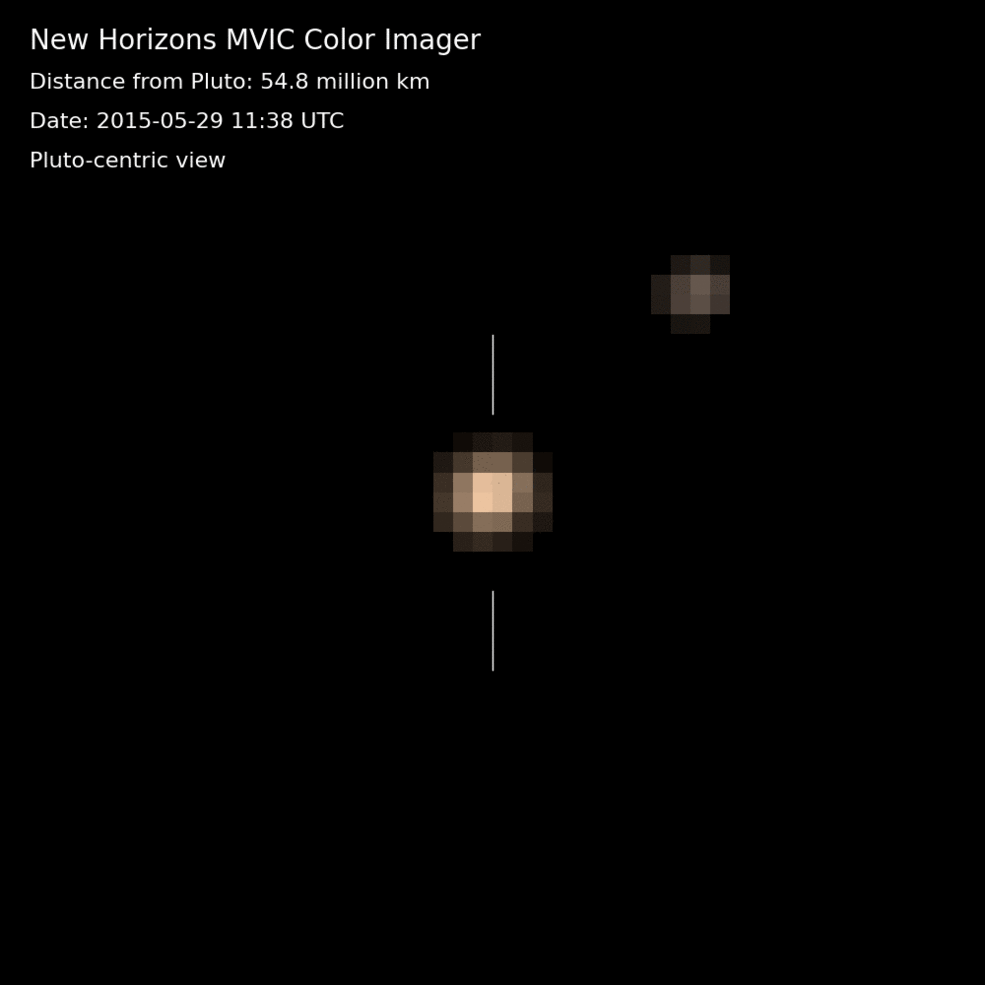First Color Movies of Pluto and Its Moon Charon From NASA’s New Horizons
by Sophia Nasr, @Pharaoness
The first ever color movies of Pluto and its largest moon Charon, have been released by NASA’s New Horizons mission team. The movies were put together from images taken on nine different occasions from May 29 to June 3 by the Multicolor Visible Imaging Camera (MVIC), an instrument dubbed Ralph (a "Honeymooners" reference), in three colors - blue, red, and near-infrared.
The first movie shows the odd little dance between Pluto and Charon as they rotate around a centre of mass (called the “barycentre") that lies outside Pluto - a point in space above Pluto's surface. The second shows a “Pluto-centric” view, where only Charon moves in relation to a digitally centered Pluto.
“It’s exciting to see Pluto and Charon in motion and in color,” says New Horizons Principal Investigator Alan Stern of the Southwest Research Institute (SwRI), Boulder, Colorado. “Even at this low resolution, we can see that Pluto and Charon have different colors—Pluto is beige-orange, while Charon is grey. Exactly why they are so different is the subject of debate.”


If you take a close look at Pluto as it rotates around its axis with a period of 6.39 days (which is the same time it takes Charon to make one orbit, as the two are tidally locked), you can see a regular shift in the brightness of Pluto. This variation in brightness is a result of the brighter and darker areas across the surface of Pluto.
It may look like a pixelated blob now (one full of scientific data), but rest assured the color images are only going to get better as New Horizons nears the system. “Color observations are going to get much, much better, eventually resolving the surfaces of Charon and Pluto at scales of just kilometers,” said Cathy Olkin, New Horizons deputy project scientist from SwRI. “This will help us unravel the nature of their surfaces and the way volatiles transport around their surfaces. I can’t wait; it’s just a few weeks away!”
New Horizons has been on an epic 4.8 billion km (3 billion mile) journey - it's the first mission of its kind - exploring the third zone of our solar system (terrestrial planets, gas giant planets, dwarf planets). When it arrives at the Pluto system on July 14th, just 12,500 km (7800 miles) above its surface, the spacecraft will be the first to ever image a Kuiper Belt object in detail. New Horizons will study the surface compositions, atmospheres, and moons of the Pluto system.
With just a few weeks left until New Horizons reaches the Pluto system, we are in for a real treat. And we get to watch as the images keep getting better and better as the spacecraft closes in on Pluto... it doesn't get more exciting than that!
For the original press release, click here.
Last edited on June 25, 2015 4:00pm ET
 Sophia Nasr is an astrophysics student at York University. Actively involved in the astronomical community at York U, she is the President of the Astronomy Club at York University and a member of the team at the York University Observatory. She also is involved in university projects, and holds a position in research on dark matter at York U. Holding scientific outreach dear, Sophia is actively involved in social media outlets such as Facebook, Twitter, and Google Plus, where she shares with the world her passion for the universe and how it works.
Sophia Nasr is an astrophysics student at York University. Actively involved in the astronomical community at York U, she is the President of the Astronomy Club at York University and a member of the team at the York University Observatory. She also is involved in university projects, and holds a position in research on dark matter at York U. Holding scientific outreach dear, Sophia is actively involved in social media outlets such as Facebook, Twitter, and Google Plus, where she shares with the world her passion for the universe and how it works.







